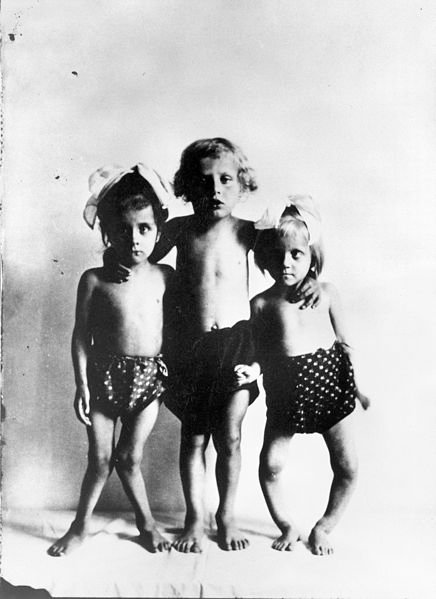Making our own Vitamin D: Can we now say that Humans also undergo Photosynthesis?
Introduction
In primary school, we were taught that photosynthesis is a process whereby green plants use sunlight to synthesize their own food and nutrients from carbon dioxide and water. In those days, our biology teachers used photosynthesis as a major point to different plants and animals, thus he always said, “plants can undergo photosynthesis, but animals cannot.”
This teaching, to a very large extent is true, but right now, when we consider the fact that human beings and other animals can actually also synthesize the “nutrient” vitamin D using sunlight , I guess we can rule out that particular line my teacher often used.
Also, when I was a child, I remember my grandmother telling me to sit under the morning sun the days when I was sick. I can't really remember what ailment I had then, but she claimed that the morning sun would help me get better. Thinking about this right now, I don't know if grandma knew the biochemical implications of the early morning sun she prescribed, but science has made us to understand that a healthy dose of moderate (morning) sunlight is essential for the synthesis of vitamin D.
Although it can be obtained from a few foods and supplements, Vitamin D is naturally synthesized in the skin from cholesterol through the action of the ultraviolet rays of the sun. There are two types of vitamin D formed by moderate exposure to the sun: cholecalciferol (vitamin D3) and ergocalciferol (vitamin D2); however, in this article, we'll focus our discussion more on cholecalciferol.
Synthesis of Vitamin D
At ideal atmospheric conditions, without the use of sunscreen or protective clothing, moderate exposure of the skin to sunlight can result in the production of 10,000 to 20,000 IU of vitamin D.
In this process, vitamin D is synthesized from 7-dehydrocholesterol, which is packed in the epidermal layer of the skin.
Exposure to light energy from the sun breaks the 9-10 carbon bond of 7-dehydrocholesterol and forms pre-vitamin D (pre-cholecalciferol). Pre-cholecalciferol is then spontaneously converted to cholecalciferol.
In this form, vitamin D3 is inactive. Its activation requires the action of mixed function oxidases in the kidney and liver. The inactive vitamin D is transported to the liver by vitamin D-binding protein. On getting to the endoplasmic reticulum of the hepatocytes (liver cells), mixed function oxidases add a hydroxyl group (OH) at carbon number 25 to form 25-Hydroxyvitamin D3.
Biologically, 25-hydroxyvitamin D is the main circulating form of vitamin D in the body, but it is not have as much biological activity as the final active form.
Next, to produce the active form of the vitamin, 25-hydroxyvitamin D leaves the liver and goes back into the general circulation, and goes into the kidney where it is further hydroxylated at carbon-1 to form 1,25-dihydroxyvitamin D3 (calcitriol), which is the final active form of vitamin D.
On the other hand, ergocalciferol (Vitamin B2) is produced via a pathway similar to that of vitamin B3, but in this case, it is made from subjecting ergosterol to ultraviolet radiation. Vitamin D2 is mainly derived from plant sources, and is thus the type of vitamin D contained in most vitamin D supplements.
Actions of Vitamin D in the human body
Judging from its functions, vitamin D acts more like a prohormone than a vitamin. It works together with two petite hormones, calcitonin and parathyroid hormone in regulating the absorption of calcium and phosphorus.
Vitamin D and calcium absorption
Vitamin D increases calcium absorption in the intestines by causing the formation of more calcium binding proteins. The formed calcium binding proteins then traps calcium from food and absorbs it into the epithelial cells of the intestine. Even after vitamin D has been metabolized out of the body, these calcium binding proteins continue to act in the body for several weeks.
By aiding in calcium absorption, vitamin D thus plays vital roles in bone formation, treatment of rickets , muscle contraction, transmission of nerve impulse and blood clotting, all of which require calcium.
Vitamin D and Rickets
Rickets is a childhood disease which causes inadequate absorption and reabsorption of calcium and phosphate by the intestines and kidneys respectively. This inadequacy eventually causes a deficiency of minerals in the bones, causing knock knee, bowlegs, pelvic and thoracic deformities and curvature of the spine. In adults, vitamin D deficiency causes weakness of the bones and cartilage, a disease condition called osteomalacia.
Absorption of phosphorus
Apart from calcium, vitamin D also increases the absorption of phosphates from the intestines. It also increases intestinal production of alkaline phosphatase, an essential element in phosphorylation of proteins. This phosphorylation reaction is critical in the regulation of many biological processes including lipid, RNA, and DNA metabolism.
Recently, research has shown that vitamin D also plays a role in the management of
- Autoimmune illness
- Diabetes
- Multiple sclerosis
- Mental illness
- Obesity
- Osteoarthritis etc
The intimate relationship between Vitamin D and Cholesterol
In this article, we have established that vitamin D is very important in many biological functions,and is required for optimum health, but one issue that raises major concern is the relationship between vitamin D and cholesterol.
Firstly, without cholesterol, there'll be no vitamin D. Apart from the fact that the precursor of vitamin D is derived from cholesterol, it has also been discovered that the richest sources of dietary vitamin D are cholesterol rich foods like cod liver oil, lard and oysters.
Considering this, one might argue that it is best to obtain vitamin D from plant sources (which mainly is vitamin B2), but research has shown that vitamin D2 is not as biologically efficient as vitamin D3. Also, it has a lower affinity for vitamin D binding proteins, which transport vitamin D around the body.
It is important to note that apart from transporting vitamin D around the body, vitamin D binding protein serves as a “store” for vitamin D. The body cannot use up all the vitamin D it produces at a time, so vitamin D binding protein “holds” the excess vitamins in place, and release them when needed.
Since vitamin D2 has lower affinity for the binding protein, it cannot be optimally stored, so excessive amount of it accumulates in the blood stream, and easily causes vitamin D toxicity.
So what is the fate of people taking cholesterol-lowering statins?
Statins are drugs taken by patients with high cholesterol levels. Statins reduces the synthesis of cholesterol by inhibiting the enzyme HMG COA reductase, which is the chief enzyme for cholesterol synthesis.
When the body cannot produce cholesterol, there will evidently be no way it can produce 7-dehydrocholesterol. Therefore, patients taking statin medications are at a high risk of vitamin D deficiency.
Research has also shown that the concentration of 7-dehydrocholesterol in the skin reduces with age, hence the endogenous production of vitamin D reduces with age. This is one of the reasons why old people are very susceptible to weakness of the bone and cartilage.
Conclusion
The ultraviolet rays of the sun helps the skin to produce sufficient amount of vitamin D when the skin is moderately exposed to the sun. Vitamin D is synthesized from 7-dehydrocholesterol in the skin, and activated by the action of mixed function oxidases in the the liver and kidney. Vitamin D aids in absorption of calcium and phosphorus, and has been linked to the treatment of so many illnesses.
To get enough dietary vitamin D, it is necessary to eat cholesterol-rich food. Alternatively, if for some reasons you can't take cholesterol-rich foods, and you choose to take vitamin D supplements, ensure that your supplement contains vitamin D3 and not vitamin D2.
References
How do I get the vitamin D my body needs
Vitamin D: The Sunshine Vitamin
How to get vitamin D from sunshine
Garrett, R. H., and Grisham, C. M. (2010). Biochemistry. 6th Ed. Belmont, CA: Brooks/Cole, Cengage Learning.


.jpg)

Good post. The only real source for Vit D its the sun, what we take from supplements cant be asimilate by the organism very well like most of the vitamins and minerals.
Supliments are synthetic and the rate of asimilation its very low, under 20%.
Morning rays helps organism to recover alot, its a natural healer.
Many scientific theories/observations encourage people to stay more under the sunlight.
Even the food doesnt have big amount of vitamins because people put synthetic substance to help me grow.
Valid points you've raised. Coupled with the fact that Vitamin D2 has low affinity for Vitamin D binding proteins, vitamin D3, which comes mainly from the sun is the best source of vitamin D anyone can get.
I like this post. Good job :D
Thanks for reading through
actually, he did not read through -__-
Hi @dandymee!
Your post was upvoted by utopian.io in cooperation with steemstem - supporting knowledge, innovation and technological advancement on the Steem Blockchain.
Contribute to Open Source with utopian.io
Learn how to contribute on our website and join the new open source economy.
Want to chat? Join the Utopian Community on Discord https://discord.gg/h52nFrV